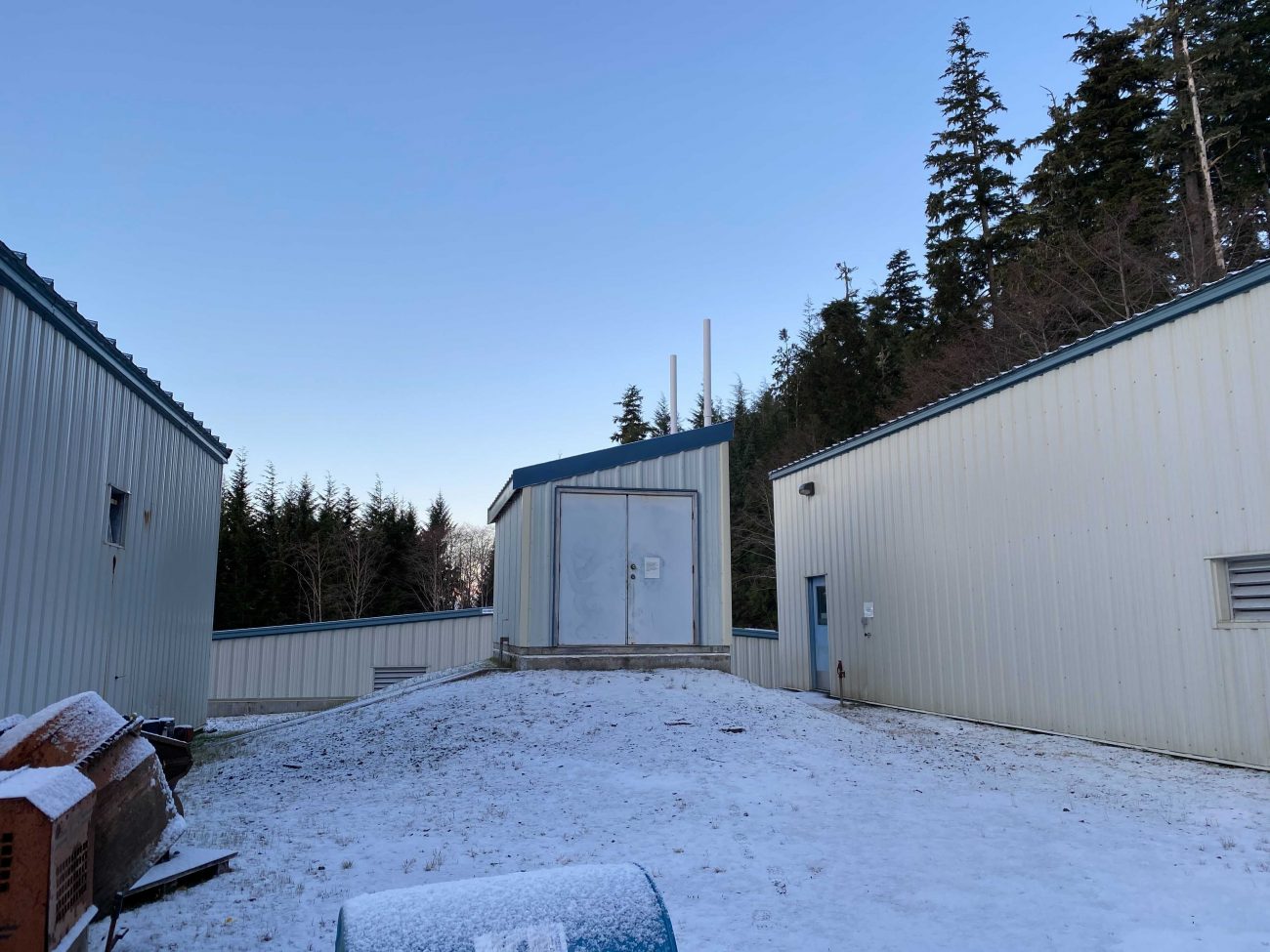
(Sage Smiley / KSTK)
This article is part of a series. Read part one here. Read part three here. Read part four here.
Wrangell’s water system strains to meet the island’s peak demand.
To understand why, KSTK takes a closer look at the city’s troubled water plant in this second installment of a multi-part series on Wrangell’s water woes.
In the first part of our water series, we went over how the town’s ancient, sediment-y reservoirs increase the already-high amount of organic stuff that makes its way into the water plant. Which wouldn’t be a problem if the plant was great at filtering organics out. But it’s not.
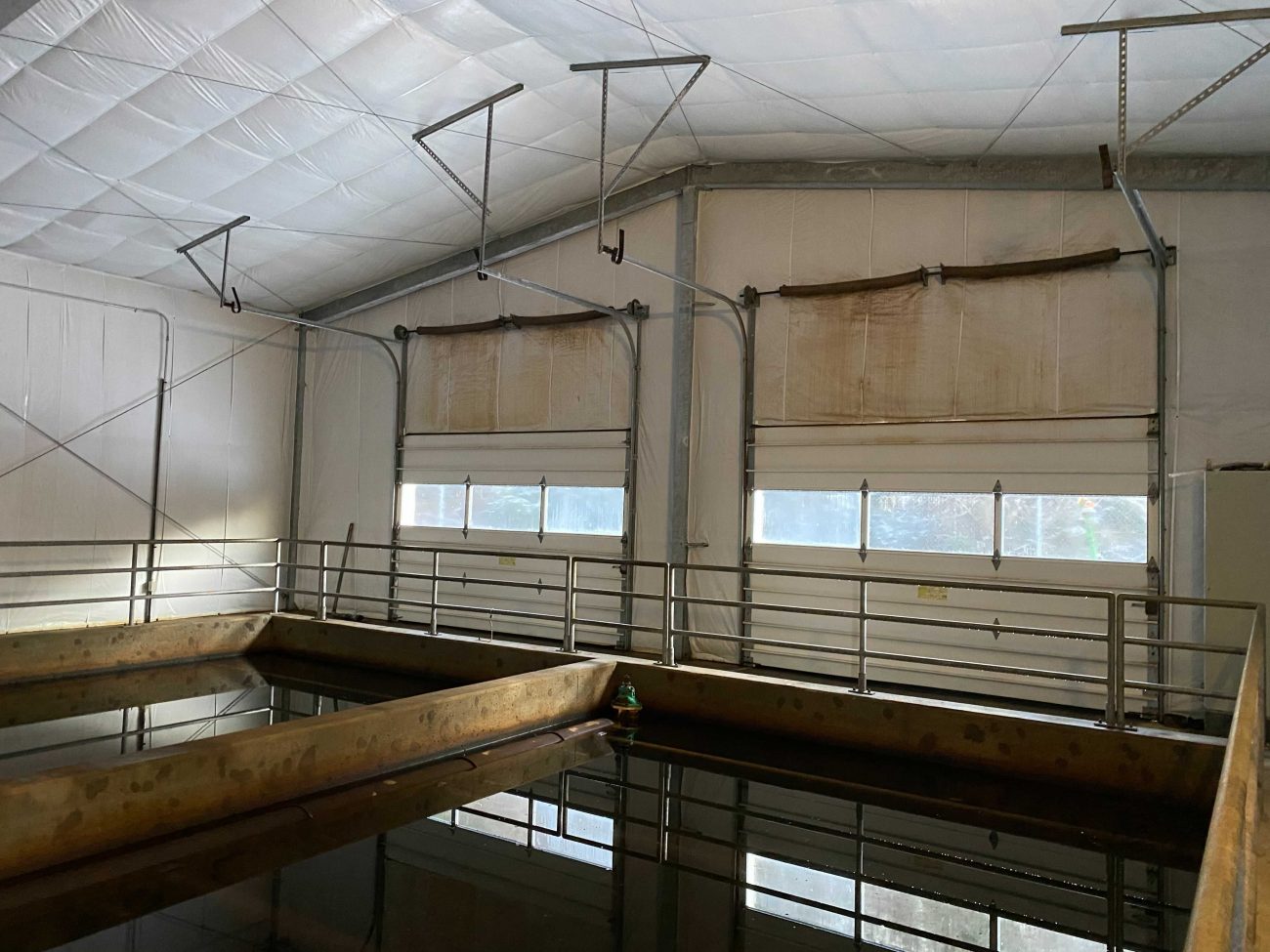
Water plant operator Wayne McHolland and I are standing by a railing, looking at two large, rectangular pools set in the ground, filled with gravel and water.
He’s a little hard to hear over the running water as he points out the plant’s two roughing filters.
“These things are the biggest reason his plan doesn’t work,” he comments.
If they were filtering out gunk like they were supposed to, he says Wrangell’s tap water would probably be a lot cleaner. Instead, he continues: “They don’t remove anything. The water just passes right through them — often it’s dirtier coming out than it is coming in.”
This plant is a slow sand filtration plant. What that means is source water flows in and is treated with ozone. Then, it’s put through a series of filters before being chlorinated and sent out to the community to drink, bathe in, cook and clean with.
But because of what city officials describe as a fatal design flaw, Wrangell’s water often ends up contaminated. State regulators sometimes have to warn elderly people and pregnant women against drinking Wrangell’s tap water. We’ll get to exactly why later in this series.
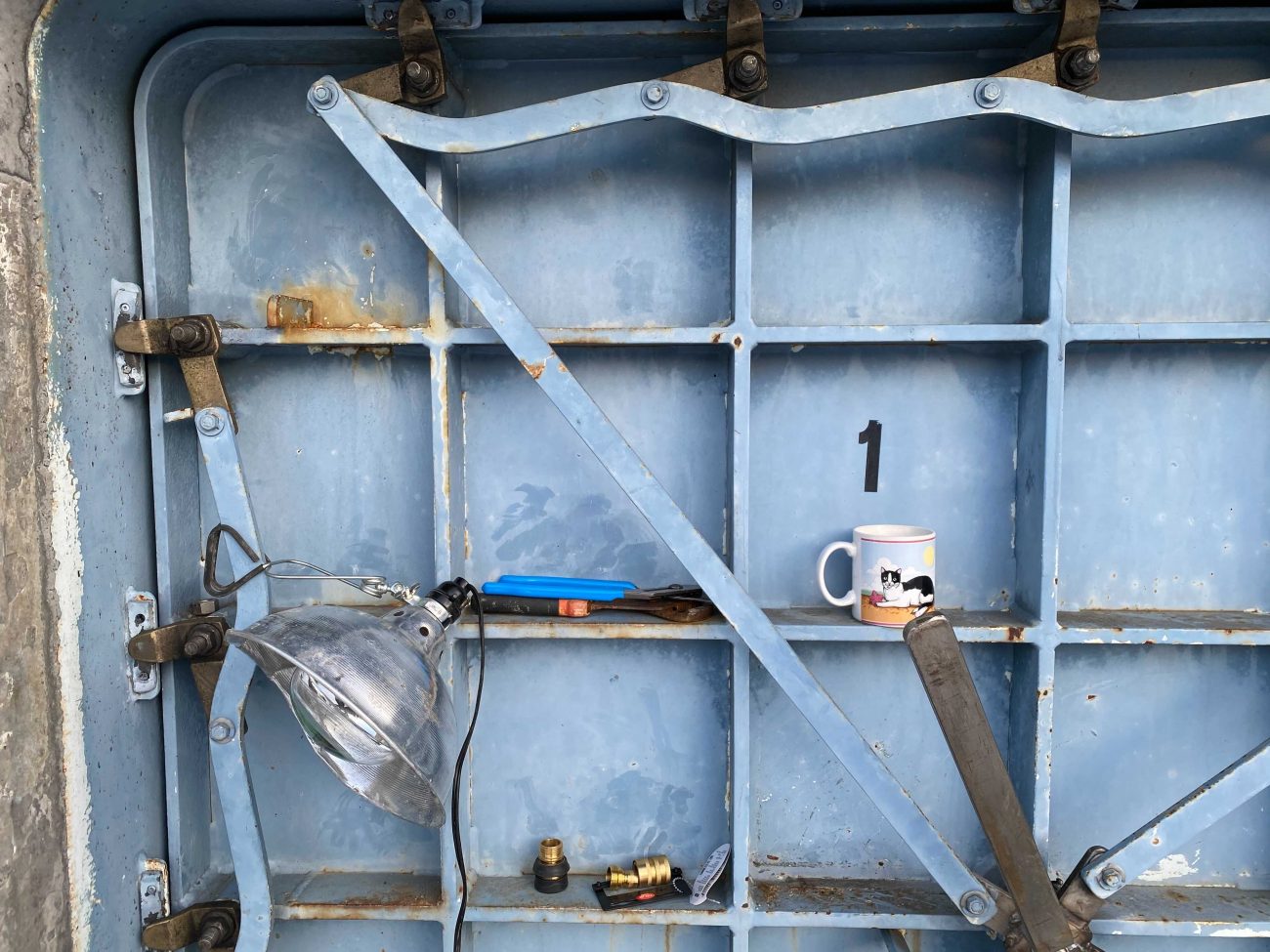
(Sage Smiley / KSTK)
The roughing filters should have pea gravel on the bottom, with some finer sand on top. But for some reason they’re backwards. Water flows in from the bottom.
McHolland laughs wryly: “You can’t backwash something when the water comes from the bottom up!”
Because the roughing filters are backwards, they don’t filter much out at all. Organic solids — plant matter and such — continue through the series of filters and get trapped in the finer, slow-sand filters instead.
McHolland describes the fine filters as: “A 40 by 75 foot cat box.”
And they get clogged all the time. That constricts the flow of water to the community. Now standing on the corrugated roof as we look down a trapdoor into the building housing the slow-sand filters, McHolland tells me: “One year we did 147 filters.”
That’s cleaning the sand, by hand. About two-and-a-half basketball courts worth.
This plant isn’t that old. It went online in 1999.
“When they built it, they goofed the way it’s designed,” McHolland says.
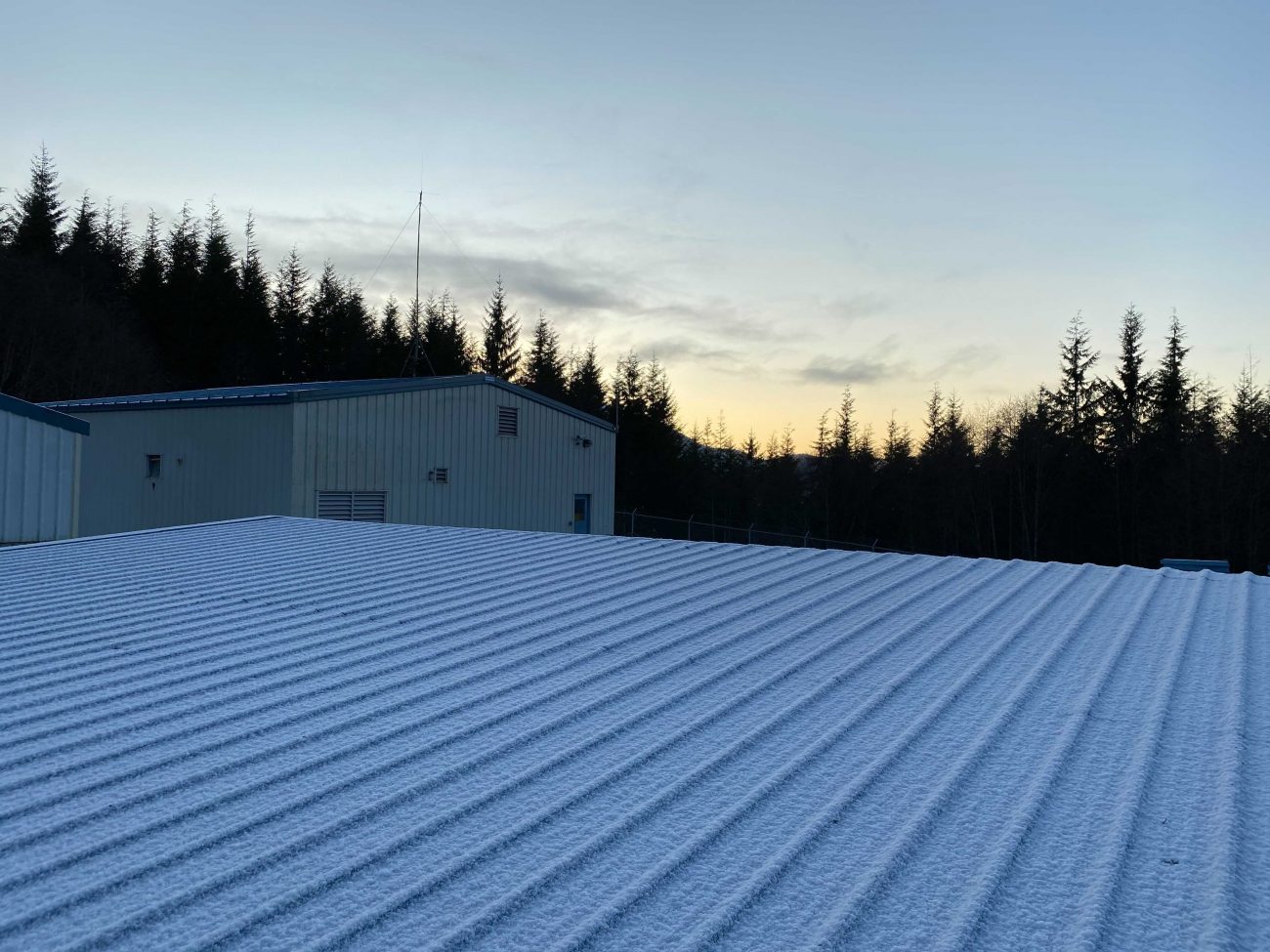
(Sage Smiley / KSTK)
It was engineered by the Bellingham-based engineering firm Wilson Engineering. They’re still in business. But the head of the firm and lead engineer passed away in 2019. Everyone else who worked on the plant’s design has long since retired. And nobody at the company could answer questions about Wrangell’s plant.
It’s unclear whether the city ever complained to the firm. Former city employees who’ve struggled with the plant say Wrangell’s public works department didn’t keep good records. Nor could I find much at city hall.
Flow issues at the plant have been clear almost since the plant started operating. It was almost immediately pushed to 100 gallons a minute more than it was meant to process. McHolland says the water plant isn’t designed to handle Wrangell’s peak water demand.
“The place was designed for 900 gallons a minute, so now the filters are actually smaller than they should be,” he explains. It’s one more factor that contributes to flow frustrations at the plant.
During winter cold snaps some people run their taps to keep the pipes from freezing. During the summer, fish processors need a lot of water to run their lines.
It’s worth noting that Wrangell’s water consumption looks fairly high. The city doesn’t meter residential customers. But by looking at the flow and doing some math, my best estimate shows a Wrangell household uses well over 300 gallons of water a day, much more than households in Petersburg or Ketchikan.
Or, at least, they appear to use more.
A lot of that water could actually be seeping through the cracks. Literally. McHolland says about 200,000 gallons goes down the drain each day during the treatment process.
Wrangell’s Mayor Steve Prysunka adds that the town has leaky, ductile iron water mains. Many of which have holes.
“Across the region, there’s been a reaction in the soil and electrolysis taking place in chewed through couplers and the mains,” Prysunka says.
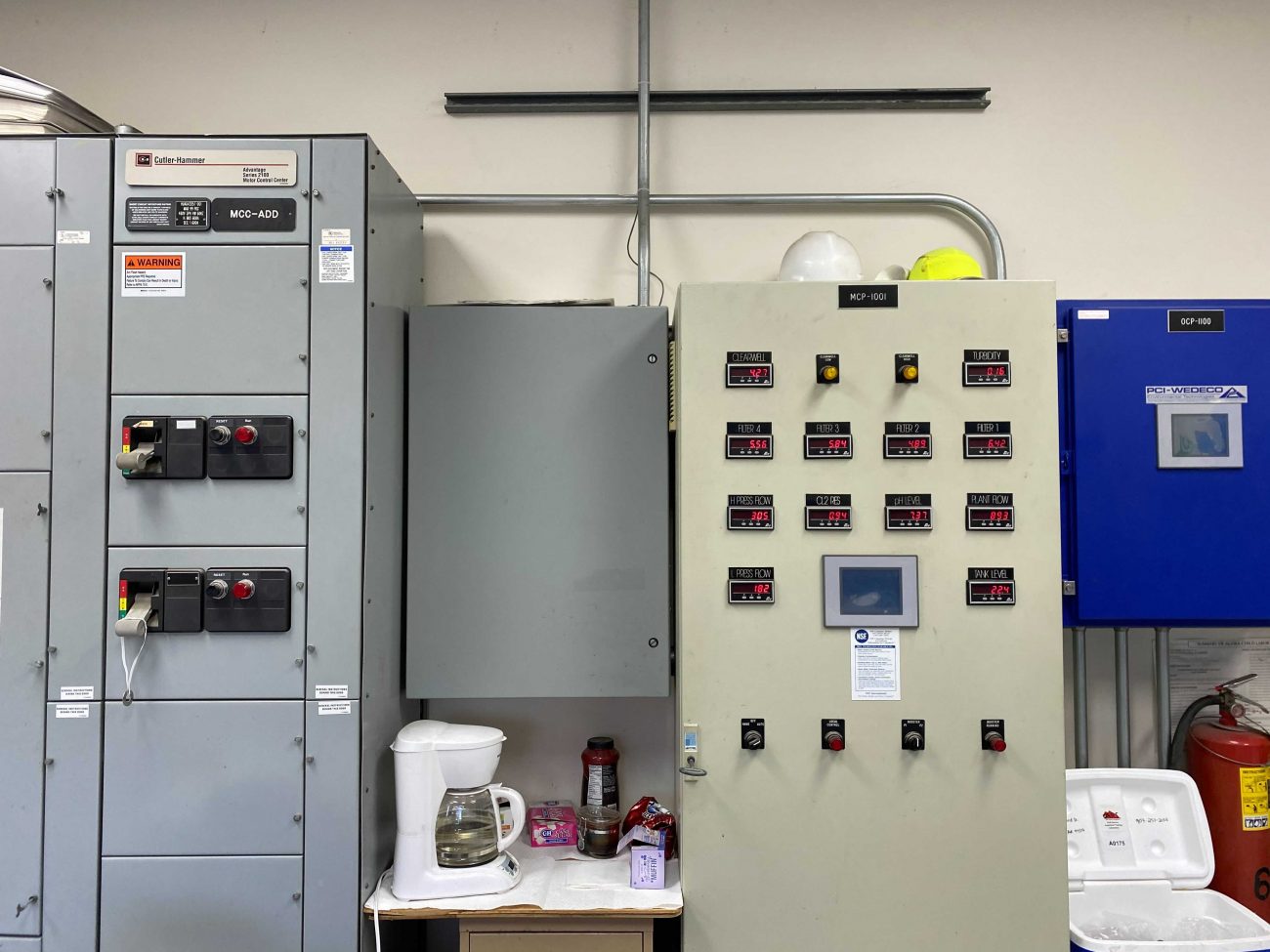
(Sage Smiley / KSTK)
The city has done some repairs, and is in the process of replacing pipes here and there with longer-lasting, less-reactive plastic pipes. The plant itself is also supposed to get a $9 million upgrade in the next few years, which we’ll take a closer look at later in this multi-part series.
Plant operator Wayne McHolland says in his view, the facility was sort of doomed from the start.
“It’s just hard for this place to catch up because of the way it’s built,” he adds.
McHolland says the design is also just not suited for water as full of organic stuff as Wrangell’s is. But he adds that we could have it a lot worse: “We’re kind of lucky or source water, although dirty, is pretty clean, if that makes any sense.”
He means there aren’t real toxins in the water. But the water source is still full of organic gunk that isn’t being filtered properly. And that leads to something else: disinfection byproducts.
They’re a chemical that federal agencies say can have long-term health effects, and they’re almost always present in our city water. We’ll take a closer look at that in our next installment on Wrangell’s water woes.
Get in touch with KSTK at news@kstk.org or (907) 874-2345.











